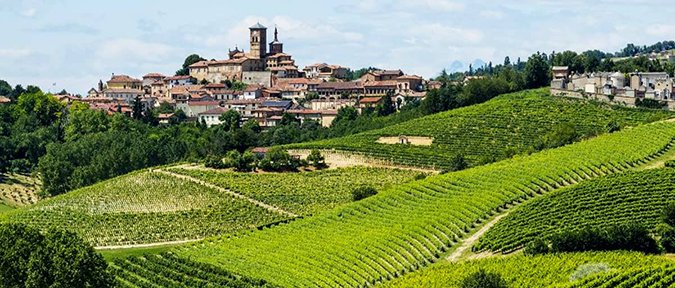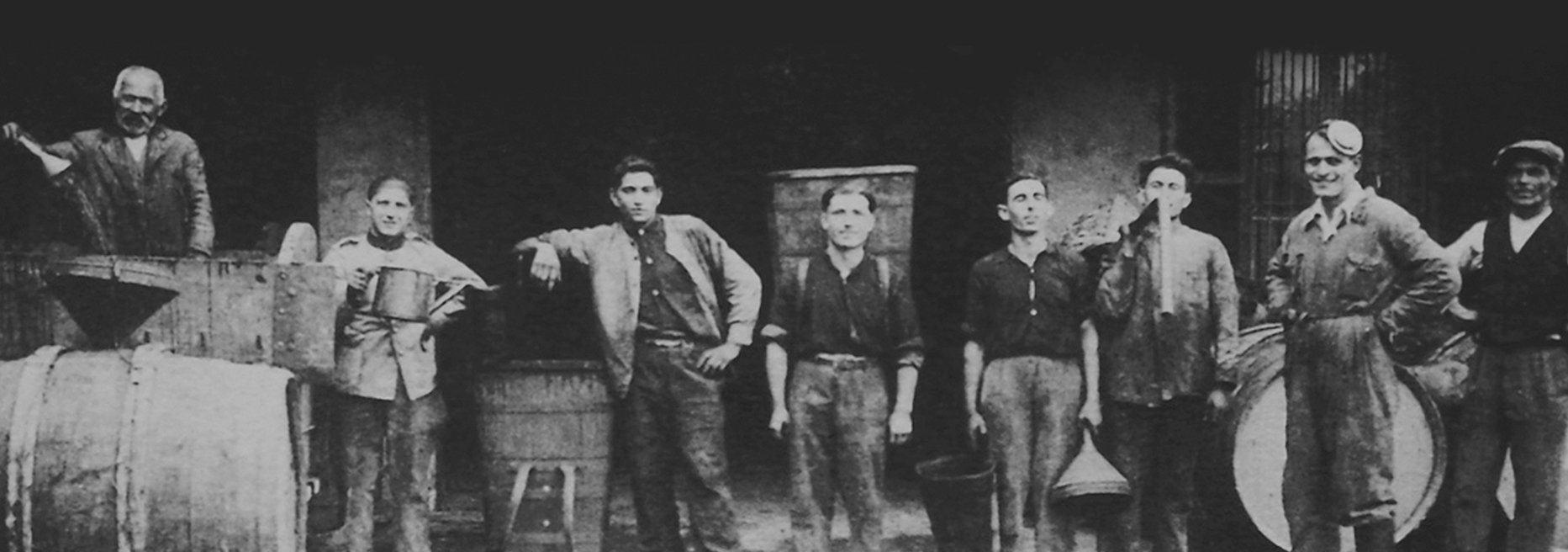Italy > Piedmont > Bonfante & Chiarle
Sustainable, ORGANIC PRACTICES, Vegan
The village of Monferrato, courtesy visititaly.eu
bonfante & chiarle
Bonfante & Chiarle traces its origins to 1908, and the firm achieved its present structure in 1975 thanks to the efforts of Luciano Chiarle, Giorgio Chiarle and Domenico Bonfante, following in the footsteps of their fathers and their grandfathers before them.
Today, Bonfante & Chiarle is recognized as one of the top producers in Monferrato, as well as in Roero and the Langhe.
Working a combination of domaine vineyards and vineyards under longterm contract, B&C work the land cleanly, using green cover rather than herbicides and Integrated Pest Management in place of pesticides. Their cellars are modern with a mix of temperature-controlled stainless, oak Barriques and of course the classic giant Slavonian oak barrels holding 2500 liters or more.
Their wines are clean and classically-styled with crisp acidity, focussed fruit and great balance. Most are single-vineyard wines, and all are superb.
The vineyards
The Langhe is one of the most famous wine producing regions in the world. The Langhe hills are located in the southern part of Piedmont, between the Maritime Alps and the Ligurian Apennines. There are a variety of microclimates, and each vineyard site has its own unique character. Look at a map of the Barolo DOCG to become a believer in the concept of terroir… that the place matters.
The soils of the Langhe are best suited suitable for the production of structured red wines, and this district is the home of the Nebbiolo grape. The geology is largely Miocene (approximately 15mya) limestones yielding calcareous-clayey soils loaded with marine fossils. The area is also noted for its fragrant Dolcettos and smaller amounts of Arneis.
Next door in the Roero, the lighter, sandier soil are perfect for fruity white wines. The geology of Roero is a bit younger, largely Pliocene and represents a nearer-shore marine environment.
To the southeast, the vineyards of Monferrato are divided into the Basso Monferrato, a district of gentle slopes and richer soils, and the Alto Monferrato, the upper Monferrato which is a mix of steeply sloping, often terraced, vineyards interspersed with patches of woods. The iron-rich soils of Monferrato are home to the Barbera grape, the most important black berried grape of Piedmont in terms of acreage.
the wines
Gavi “Piasi” - from the Piedmontese dialect for pleasure, 100% Cortese. Whole-cluster fermentation, aged 6 months in stainless and 2 in bottle before release. Bentonite fining, light filtration. Light and beautifully fresh.
Langhe Arneis “Bataja” - 100% Arneis, cold-macerated, whole-cluster fermented, then 4-6 months of ageing in stainless before bottling. Bentonite fining, light filtration. Clean & elegant.
Rosato “Reusa” - a blend of Nebbiolo and Barbera, macerated for just a few hours to develop a beautiful “onion skin” color. Hand sorted, whole-cluster fermented, then 6 months in stainless before bottling. Bentonite fining, light filtration. A lovely combination of fruit and spice notes.
Barbera d’Asti “Due Lilu” - 100% Barbera, fermented and aged 6 months in stainless. Hand-harvested off soils rich in limestone and marl. Bright and clean with intense berry/cherry fruit.
Nizza “Gessara” - 100 Barbera from the slopes to the west of the Belbo River at about 480ft elevation, outside the eponymous village of Nizza Montferrato, formerly part of the Barbera d’Asti Superiore DOCG, raised to its own DOCG in 2014. Limestone/calcareous soils. Aged 12 months in Slavonian oak and a further 12 months in bottle before release. Cherry/berry fruit with notes of vanilla, coffee, cocoa. A great example of the finest appellation for Barbera
Barolo “Bisu” - 100% Nebbiolo, aged 24 months in Slavonian oak then at least another 14 months in glass before release. Bottled with no fining, and a very light filtration. Structured and elegant, superbly balanced.




